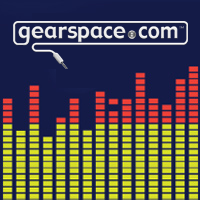Fwiw, to at least somewhat take this latency discussion back to something HX related: There's two things making me wonder.
1) Latencies are better under Windows (I knew this already, the latest post of Orvillain just remembered me). It's still pretty bad under Windows (most interfaces will get well below 10ms with 64 samples @ 44.1, even if they're TheSycon powered), but there's a whooping 3ms of a difference between Windows and macOS.
2) The best latencies can be had on macOS running the HX devices "driverless", just using Core Audio, built into macOS. Can't recommend this, though, as you might be running into troubles (such as in running multiple audio sources from your computer into the HX or when recording at different sample rates but 48kHz, etc.).
It's pretty weird because typically, as soon as companies provide a dedicated driver, performance will be better than via Core Audio. At least that's the case with every other interface I ever tested.
Maybe some Windows folks may want to check whether ASIO4All is resulting in better performance (or at least better latency figures) as well. With cheap interfaces, this sometimes has been the case (not too sure about today's situation).
Needless to say, I think this could be improved considerably. Not sure whether it's possible within this generation of Line 6 modeling devices, they may as well have just slapped in the cheapest audio interface chip available (absolutely not unlikely, btw.)
---
After all, I am perfectly aware that onboard audio interfaces in modelers are most often (well, pretty much always) something just thrown in as a kind of afterthought. At the very least, modelers are defenitely not built around the idea of them being used as high performance audio interfaces. So all you can hope for is that the interfaces do at least work stable and not cause recording offsets. Otherwise user can just be happy that they're there, having an onboard audio interface pretty often is better than having none.
But imagine there was a better interface in your modeler, delivering the same latency values as just, say, Motus M series (they're possible the best VFM devices these days, as Motu apparently has considerably upped their driver game).
You probably wouldn't have to buy a Tonex pedal to enjoy captures within your HX ecosystem. You'd just get a 2-in-1 convertible laptop (best solution for live players as computer keyboards are the antichrist of stage organisation) and possibly run Gig Performer hosting each and every plugin you'd like on it. Not happy with the reverbs on your modeler? Well, chose one of the tons of (sometimes even free) excellent ones. Or just use an IR based reverb and roll your own. And, as with Tonex, you could just run each and every amp plugin alongside what's coming with the hardware. And in case the main workload was still done by the hardware, even a rather cheap convertible laptop would do, setting you short just around 500 bucks. Add a VST host (for a start, Reaper would likely be just fine) and enjoy each and every VST plugin there is.
For me, that'd be sooo much best of both worlds...


